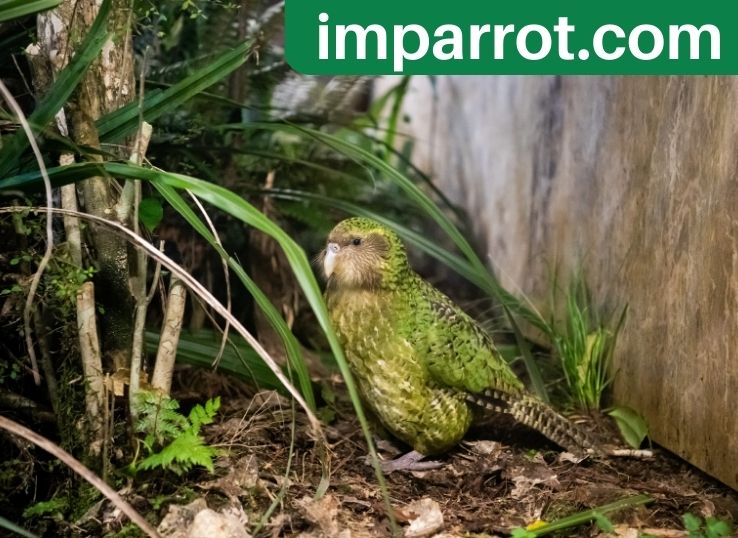Kakapo Diet (Everything You Need to Know)
Last Updated on February 22, 2023 by Ali Shahid
The Kakapo is a large, nocturnal, flightless parrot with an owl-like face. With only 249 people left alive, they’re critically endangered. It is fascinating for us to look at everything related to Kakapo, and we are also fascinated by the Kakapo diet.
The kakapo is an entirely herbivorous parrot, meaning that they consume only plants for food. These guys eat everything, from high rimu branches to juicy supplejack vines to orchard tubers dug up out of the ground. Its diet is extremely varied, and it includes fruits, nuts, berries, seeds, leaves, shoots, and more. Even though they are not able to fly, they are capable climbers and forage in trees.
A Kakapos’ gizzard is relatively underdeveloped in comparison to that of most species of birds. Instead of their gizzards, these owl parrots grind their food with their beaks and tongues.

Kakapo Diet
Generally speaking, kakapos consume herbivorous foods. There are a variety of foods that these parrots eat, such as cones, bulbs, pollen, green shoots, fungi, fern roots, seeds, stems, foliage, moss, nuts, bark, and fruit.
However, kakapos do not always feed on herbs. Occasionally, they also consume insects, larvae, and reptiles. Kakapo’s diets are also influenced by the season.
Feeding Pattern of Kakapo
According to research conducted on Stewart Island, New Zealand:
Most feeding signs were found on herbs, ferns, and shrubs, especially on new growth, like leaves, bark, fruits, and seeds. In most cases, we found kakapo signs on Lycopodium ramulosum, L fastigiatum, and Schizaea fistulosa var australis.
Throughout the year, all parts of plants were fed frequently, although there were seasonal variations in the use of different parts of plants. The feeding signs suggest that kakapo are versatile feeders with variable feeding patterns.
It doesn’t matter what they can find, they’ll eat it. Kakapo has a flexible feeding pattern that allows them to take advantage of seasonal foods that may only be available for a short time or intermittently.
Rimu Tree Fruit Preference
While kakapos consume a variety of plants and fruits, such as berries, their preferred meal is the fruit of the rimu tree. It is typical for kakapos to feed exclusively on this fruit when it is readily available. A kakapo’s favorite fruit is the rimu tree fruit.
Kakapo Diet in Breeding and Non-Breeding Season
A statistical analysis of the plant remains found in kakapo feces, obtained between 1977 and 1999 on Codfish Island (Whenua Hou) and Stewart Island, had been conducted in order to identify patterns that may be associated with the kakapos’ diet and breeding.
A significant percentage of females consumed podocarp fruit or leaves from trees or shrubs; males consumed fern rhizomes and Lycopodium rhizomes, monocotyledons (during breeding years), and manuka fruit (during non-breeding years).
There was a significant increase in the presence of podocarp fruits in kakapo diets in breeding years compared to non-breeding years. A podocarp fruit was the most likely food eaten by kakapo in breeding years.
Conversely, in breeding years, Blechnum fern fronds are more common in female droppings than in non-breeding years.
Females and males ate more podocarp fruits during breeding years, while other foods declined in prevalence. When females weren’t breeding, their diet increased with Hall’s totara leaf.
Reference:
Cottam, Yvette, Don V. Merton, and W. H. Hendriks. “Nutrient composition of the diet of parent-raised kakapo nestlings.” Notornis 53.1 (2006): 90-99.
Best, Hugh Andrew. “The foods of kakapo on Stewart Island as determined from their feeding sign.” New Zealand journal of ecology (1984): 71-83.
Wilson, Deborah J. Diet of kakapo in breeding and non-breeding years on Codfish Island (Whenua Hou) and Stewart Island . Department of Conservation, 2004.

